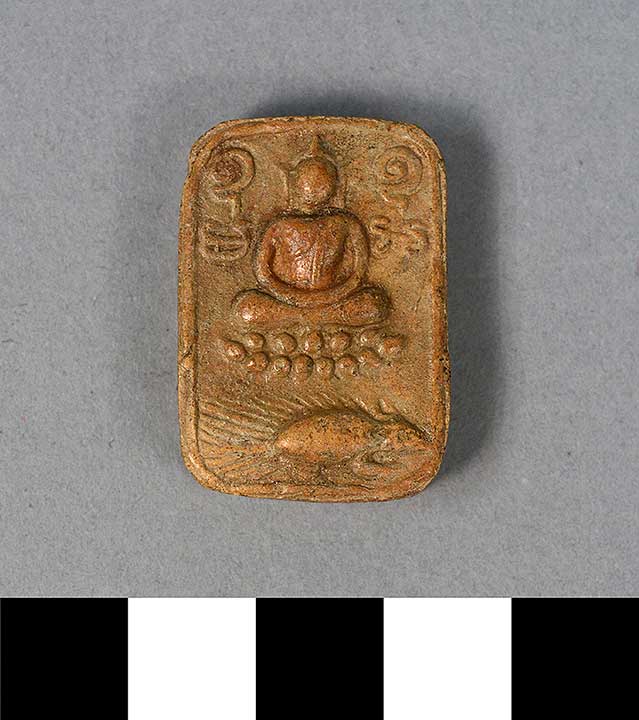Amulet: Buddha Sitting on Porcupine
2008.22.0206
Detailed Images
Basic Information
| Artifact Identification | Amulet: Buddha Sitting on Porcupine (2008.22.0206) |
|---|---|
| Classification/ Nomenclature |
|
| Artist/Maker | Luang Phaw Parn |
| Geographic Location | |
| Period | N/A |
| Date | N/A |
| Culture | Thai |
| Location | Not on Exhibit |
Physical Analysis
| Dimension 1 (Length) | 3.0 cm |
|---|---|
| Dimension 2 (Width) | 2.1 cm |
| Dimension 3 (Depth) | 0.8 cm |
| Weight | 7 g |
| Measuring Remarks | N/A |
| Materials | Ceramic--Terracotta, |
| Manufacturing Processes | Carved |
Research Remarks
| Description | N/A |
|---|---|
| Published Description | Under Review |
| Bibliography | McDaniel, Justin Thomas. “liberation materiality: thai buddhist amulets and the benefits of selling sacred stuff.” Material Religion, vol. 11, no. 3, Sept. 2015. |
Artifact History
| Credit Line/Dedication | Kieffer-Lopez Collection |
|---|---|
| Reproduction | No |
Contact
All information about our collection is constantly reviewed and updated. Please contact Dery Martínez-Bonilla, Registrar, if there is any information you are looking for that isn't currently online.
